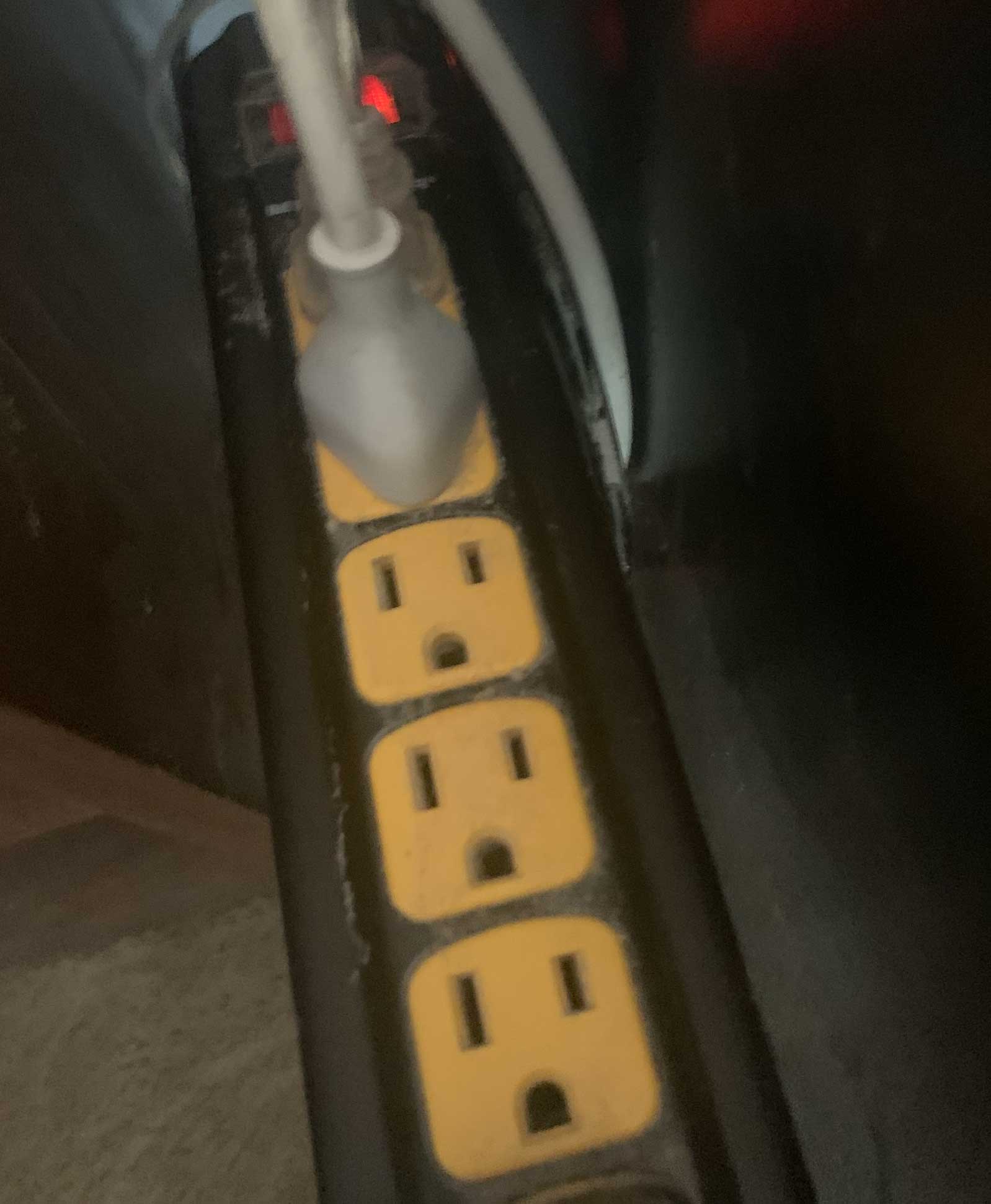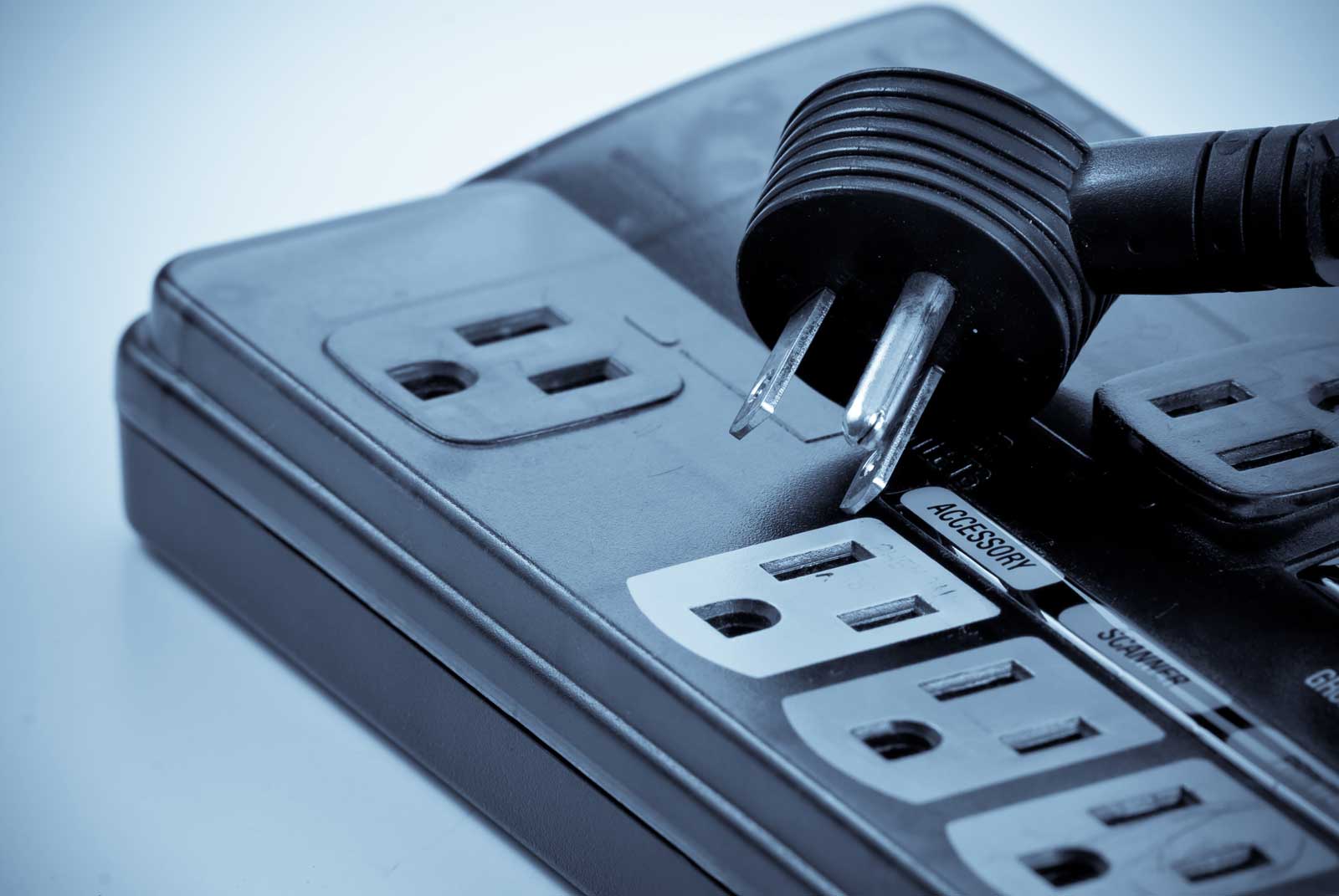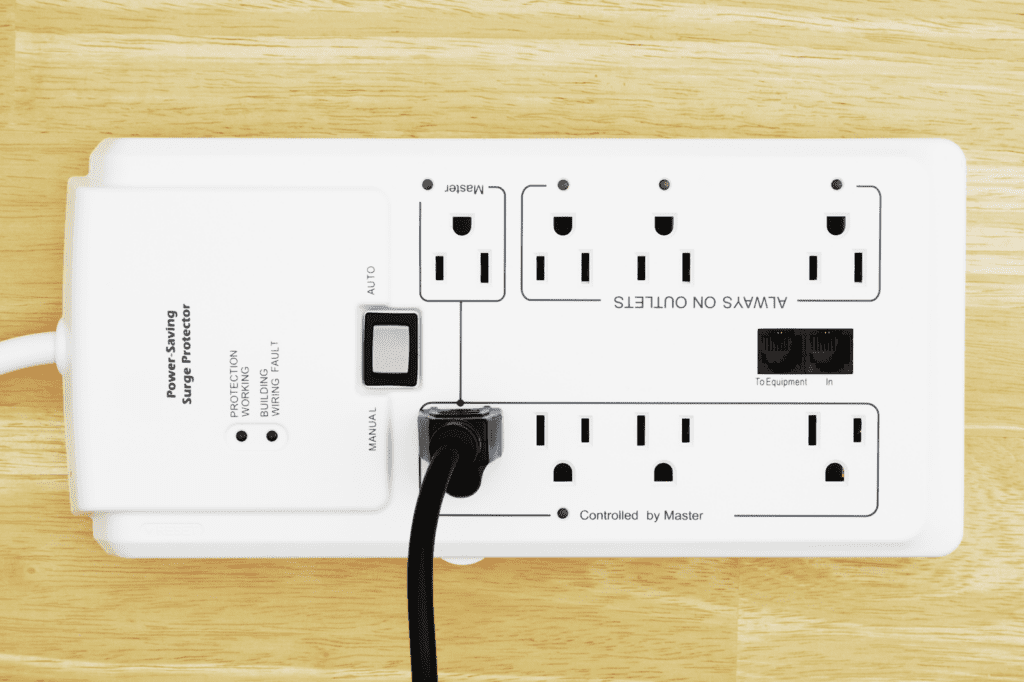People working from home rely on laptops, smartphones and tablets that, when you price it all out, add up to thousands of dollars worth of delicate equipment that are running a variety of complex software packages just to get our work done every day.
These delicate electronic devices play a critical in our daily lives – if something goes wrong with one of these devices we’re not able to do our job or communicate.
So it’s important to know the right way to power these devices, and often a power strip is the go-to solution for getting power to them all.
So how many things can you plug into a power strip?
It actually doesn’t necessarily matter how many devices you can plug into a single power strip, it matters how much electrical current is being pulled from each device.
Each power strip is rated for a certain amount of electrical load, and exceeding that load can cause all kinds of problems.
In this article we’re going to go through how many things you can actually plug into a power strip and talk about a few things you should never plugin to a power strip so you don’t end up learning a costly lesson like I did.
By the way – before we get too far into it here, if you want to get more great ideas for your gaming room or home office and want to connect with other home office hackers to make your space the best join my free private Facebook group, Home Office Hacks here.
How Many Devices Can I Plug Into A Power Strip?

When it comes to electrical services and common sense, well, common sense isn’t so common.
It’s not always easy to tell what you should do with your power cables to your various devices in your home.
But as a general rule of thumb you should not plug more devices into a power strip than there are available outlets.
That means one outlet on the power strip, one device.
However, that doesn’t mean that you can just plug anything you want into a power strip.
Some devices and electronics should never be plugged into a power strip.
And other electronic devices need a surge protector with a circuit breaker between them and the power outlets, lest you run the risk of a power surge knocking out vital equipment.
I learned this lesson the hard way personally.
I live in Florida so we’re used to getting some pretty nasty summer storms.
One day we had one of those nasty storms roll in.
We had a big lightning strike near my apartment and it took out my cable modem, router, an external hard and everything else attached to that power strip.
Thankfully, the rest of my connected primary equipment – my computer and all the other electronic devices in my office – was protected behind surge protectors.
It really sucked and was a costly oversight on my part.
If I’d known that I could’ve prevented that by passing all my connections through an additional surge protector, I’d gladly have done it.
So even though you may not think about it very often (if ever) surge protection is vitally important to the electronics you have in your home and home office.
It’s important to know what you should and should not plug into a power strip, so let’s get into it.
What Things Can I Plug Into A Power Strip?

Power strips are utility devices that really function best when you’re turning on or off several different items at one time.
That makes a power strip a perfect solution for turning on your lighting in your room, your electric standing desk.
These are devices that don’t have complex, delicate electronic hardware.
Other items like your smart phone, your phone chargers, tablet chargers, monitors, and other peripheral computer devices should be protected behind a surge protector power strip.
What Things Should I Never Plug Into A Power Strip?

What are some things you should never plug into a power strip?
There are some things that simply shouldn’t be plugged into a power strip. Here are some examples:
Never Plug Your Computer Into A Power Strip That Is Not Also A Surge Protector
Did you even know that there is a difference between a power strip and a surge protector?
If you don’t know that already, knowing that one fact could be one of the most money-saving lessons you learn about how to do life in your home office.
A power strip provides the ability to get power to multiple devices from a single wall outlet and to turn off and on several attached devices at once.
A surge protector is a special kind of power strip that’s designed specifically to withstand a power surge and keep all your electronic devices plugged into it safe.
If you are using a cheap power strip to power your computer and you have a power spike you can quickly lose very expensive equipment, and anything connected to that power strip.
Never Plug A Refrigerator Or Freezer Into A Power Strip
A refrigerator uses about 1/3rd as much power as a typical light bulb. An air conditioning system uses even more.
These appliances draw a big amount of power that can very easily overload a power strip and blow the fuse.
Then you end up with a refrigerator or freezer full of spoiled food and no one wants that.
Never Plug A Microwave Into A Power Strip
Microwave ovens are incredibly convenient for heating your food or beverages up very quickly with little fuss.
But they also use an enormous amount of power is more than a power strip can handle.
Never Plug Kitchen Appliances Into A Power Strip
Just as plugging a microwave or refrigerator into a power strip is a bad idea, the same thing goes for most kitchen appliances too.
Coffee makers, toaster ovens, Instapots & slow-cooking crock pots all pull to much current to use with a power strip.
Never Plug Grooming & Beauty Tools Into a Power Strip
Hair dryers, curling wands & irons draw a lot of power — too much for a power strip.
These should be plugged directly into an appropriate wall outlet.
Never Plug Portable AC Units Or Space Heaters Into A Power Strip
You shouldn’t plug an air conditioner or refrigerator into a power strip because they use a lot of power.
Same thing goes for plugging a space heater in those cold months into a power strip – it simply needs more power than a power strip can handle.
Never Plug One Power Strip Into Another Power Strip
Power strips are not designed to be daisy-chained together so do not plug one power strip into another one.
Your electrical outlets are designed to be able to carry only so much electrical load.
Just because you can loop together a bunch of different power strips and plug them into a single outlet, doesn’t mean that you should do it.
You should not do that – unless you’re looking to get a visit from your friendly neighborhood fire department.
The same thing goes for using an extension cord to power a power strip.
Can You Plug Too Many Things Into A Power Strip?
Yes, you can definitely plug too many things into a power strip.
This is called overloading and can trip circuit breakers in your electrical panel, or worse.
Make sure you understand the amount of power a device needs to run properly before plugging it into a power strip.
Next Steps
Want to join others who are creating the most amazing home offices and get more tips, tricks and hacks on how to make your home office the best it can be?
Join my brand new free private Facebook group, Home Office Hacks to connect with other home office hackers to make your space the best.
